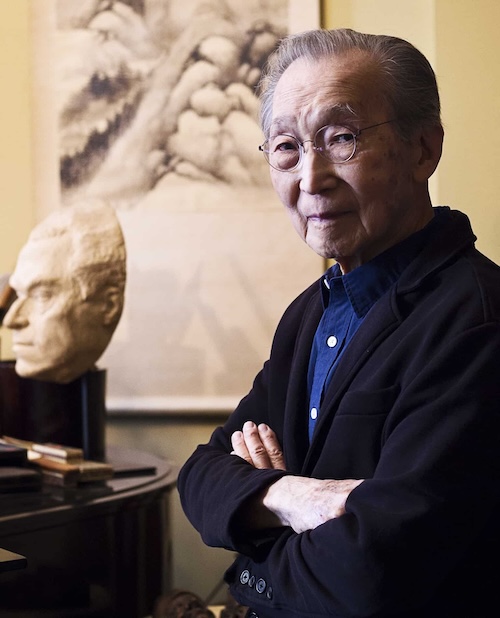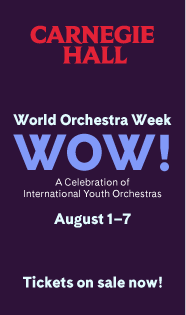Continuum pays rich musical homage to Chou Wen-chung

The life and music of Chou Wen-chung was commemorated at the Miller Theatre at Columbia University on Thursday evening. Joel Sachs led Continuum, a musical ensemble dedicated to performing the music of living composers, in a retrospective concert of the Chinese-American composer’s works in honor of the centenary of his birth. There was also a panel discussion with friends and colleagues which provided insights into his remarkable life and the impact he had on both Western and Chinese music.
Chou was born in Yantai, China in 1923 and died in New York in 2019 at the age of 96. He came to the United States in 1946, after experiencing the horrors of the Japanese invasion and occupation during World War II, to study architecture on a full scholarship at Yale University. With his father’s blessing, he chose to become a composer instead, counting Nicolas Slonimsky, Edgard Varèse and Otto Luening among his teachers.
As a member of Columbia University’s faculty from 1964 until his retirement in 1991, Chou fostered cultural exchanges and collaboration between China and the West. He brought young composers, including Tan Dun, Zhou Long, and Bright Sheng, to the United States to study. His efforts in cultural diplomacy led to the founding of the Center for U.S.-China Arts Exchange in 1978, which presented artists such as Luciano Pavarotti and Isaac Stern in China or the first time
“Calligraphy is music in ink. Music is calligraphy in sound.” Those words summarize Chou’s approach to composing. They are also the key to understanding it and appreciating and understanding it. Musical phrases appear with the same fluidity and depth of emotion as ink does on the page. And as with the most masterful of brush strokes, Chou’s musical flourishes often taper off into nothingness.
Sachs, who is both friend and colleague to Chou, conducted the performances. He led from the heart and the musicians responded in kind with playing which was meticulous and beautiful. Most of all, however, the music which they produced resonated with emotion, as well as an evident affection and respect for the man who created it.
At the heart of the program were two works, In the Mode of Shang (1956) and The Willows Are New (1957), which Luyen Chou, one of the composer’s two sons, described as love songs. It is a story, however, tinged with grief. Chou dedicated In the Mode of Shang to his first wife, Katherine “Poyu” Chou, who died within months of their wedding.
After a sole performance with reduced musical forces at the New York Composer’s Forum in 1957, In the Mode of Shang remained unpublished until after Chou’s death. The world premiere of the piece as Chou originally envisioned it was given by the Xinghai Conservatory Orchestra conducted by Bing Chen in November 2023. This performance was only its second hearing in its original orchestration.
Luyen Chou described In the Mode of Shang as being the playful and joyous expression of a young man in love. The piece is also a beautiful realization of Chou’s skill and sensitivity in combining traditional Chinese traditions and Western contemporary music.
Chou was not one to indulge in ostentatious displays of exotic orchestral color, but even so his choice of instruments create marvelous, enticing sounds. The woodwinds enlivened In the Mode of Shang with their sprightly and piquant playing. There was humor in the work too, especially in the gastric musical emissions from the horn and tuba towards the end of the piece.
The Willows Are New, Chou’s sole piece for solo piano,has no dedication, but Luyen Chou surmises that it was inspired by his father’s chance meeting with pianist Chang Yi-An. Chou made some rather insensitive comments about Chang Yi-An’s choice of instrument, but their meeting seems to have lingered in his mind after she had left for Europe to study. They were to marry in 1962 and have two sons, Luyen and Sumin, both of whom spoke of their father at the concert.
The inspiration for The Willows Are New came from an ancient poem. Its words are laden with symbolism and emotion—the branches of the willow being a sign of parting and a reference in the poem to Yang Kuan, a mountain pass known as the point of no return. In his piano playing, Sachs summoned the darkness and foreboding of these images. He likewise exhibited the dual capacity of creating sweeps of melody, yet illuminating them with the most minute of dynamic and tempo changes.
Twilight Colors (2007) and Ode to Eternal Pine (2009) are two of the few works in which Chou was inspired by non-Chinese themes. In Twilight Colors, Chou sought to capture the changing skies over the Hudson River, which has been a source of inspiration for generations of American artists.
Each of the piece’s four movements carries a description of the natural scene which Chou captured in this especially atmospheric and beautiful music. It is scored for double trio, with the woodwind players adding color by alternating instruments, such as oboe for English horn. There was exceptionally fine playing from violinist Renée Jolles, Pablo O’Connor on the oboe and English horn, and clarinetist Roi Karni.
Ode to Eternal Pine is composed in the spirit and style of traditional Korean chong ak music and is the only piece Chou composed with an Asian but non-Chinese inspiration. This ancient form of chamber music sought to express the range of human emotion inspired by natural phenomenon which have inspired East Asian minds for centuries.
This was far different music than any which had preceded it. The sound of percussion dominated the piece and Greg LaRosa played bells, gongs, drums, cymbals and more brilliantly in a performance which was visceral in its impact.
Yü Ko (1965), the only other work on the program, displayed Chou’s interest in ancient Chinese traditions. Translating to “fisherman’s song”, it is a rare surviving example of the tabular notation from the thirteenth century. The notation is similar to that used for lute and modern guitar music which indicates that actual placement of the fingers instead of showing the actual notes.
Sachs expertly coaxed fragments of melody from the individual instrumentals and then coalescing them into a unified whole. Even more impressive was the players’ skill in capturing the sound of the ch’in (zither) on which the ancient melody was originally played.
In the Mode of Shang was again performed at the end of this concert. It was a lyrical and moving final tribute to Chou Wen-chung with music as heartfelt and profound as was the man himself.
